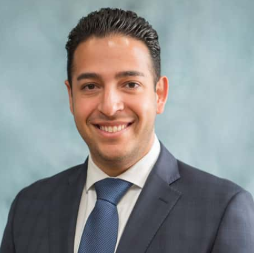HousingWire sat down with Sharestates CEO Allen Shayanfekr to discuss real estate crowdfunding and how low interest rates and low housing inventory are affecting investors.
HousingWire: How has real estate crowdfunding evolved over the last several years?

Allen Shayanfekr: When we first started our business, there were a few hundred companies that were looking to be crowdfunding platforms. I think people – including us – underestimated what it was going to take to launch this type of business.
I think everybody kind of gravely underestimated how much work it was going to take to get eyeballs to a website, to make people comfortable investing even as little as $100 or $1,000 through a website that had very little track record. It was a relatively new concept.
It takes time to build trust and to build a business where people can feel safe and comfortable investing, and a lot of those businesses failed. I’d say there’s probably about a half dozen crowdfunding companies in the real estate sector right now.
Another thing that evolved out of that was a focus more toward debt investments as opposed to equity investments. I think many players in the space realized over time that while crowdfunding — going after the masses and getting people to invest $1,000 or $5,000 in these small increments — was a great idea, it was going to take time to build that up.
People that are running a business and trying to build a profitable, scalable business need bigger dollars, so a lot of people, including us, ended up pivoting towards focusing on working with institutional investors.
We focused on building a product for institutional investors that would help us gain access to larger investment dollars earlier on in the business, which ultimately helped us grow and build a profitable business and ultimately a better product for that individual investor.
HW: Are you seeing more interest in real estate investing as a result of low interest rates?
AS: It still hasn’t been very long since the coronavirus scare began causing some turbulence; it’s been a few weeks that we’ve been seeing this craziness in the public markets. I think what people are realizing is that fixed-income investments are safer and less volatile than what they’re experiencing today in the public markets.
Yes, the public markets could outperform a private debt investment that’s giving you a fixed rate of return. But the tradeoff is security and a lack of volatility.
In this current economic turmoil, we’re seeing people pull capital out of the public markets and look to shift it towards more fixed-income assets that provide a monthly dividend, like the product that we offer.
As a result of seeing lower interest rates, we are seeing an increased uptick in the number of borrowers that are looking to transact. You’re seeing prices that were previously perhaps declining in certain markets starting to stabilize as a result of lower interest rates.
HW: How are real estate investors adjusting to low housing inventory?
AS: What we’re seeing is a shift from one-to-four family residential, like fix-and-flip and rehab type projects, to more expensive projects. When we started back in 2015, we were seeing people picking up a single-family home or two-family home and doing very light cosmetic work to it.
Five years later, what we’re seeing are much heavier construction lifts, such as people going and doing complete gut renovations ripping everything down to the beams, or in some cases down to the foundation, and rebuilding up. Or in some cases, buying land and just doing ground-up construction, period.
We’ve also seen a larger shift from one-to-four family residential properties to other asset classes like multifamily and mixed-use assets. So as that residential product starts to dry up, you see people evolving with that and moving towards 10 to 12, 10 to 15-unit apartment buildings and other mixed-use similar types of assets.
I’d say the development phase and the asset classes investors look at are changing. In terms of development phase, ground up construction and heavy construction as opposed to light cosmetic rehabs, and then in asset classes, more commercial-type assets as opposed to residential.
HW: What opportunities does Sharestates provide for borrowers and for the real estate market?
AS: What we’re providing for borrowers is basically a one-stop shop for all of their financing needs. The benefit to working with us is that we have built a very wide range of product offerings, where we can help a borrower through their entire borrower lifecycle.
Everything from providing bridge financing across various asset classes and geographic locations, — whether it be residential multifamily, mixed use or commercial assets, whether they’re in New York or California, wherever you might want to be developing — all the way through a term product as well. So as those assets are completed and are leased up and perhaps ready for refinancing, we can then come in and provide them with their 30-year fixed mortgages.
As part of creating that end-to-end environment, we have created a great technology solution that goes with it, with the goal of making the process easier, faster and less time-consuming for borrowers.
If we already have all their data and we have all of their information from their initial bridge or construction loan, we make the refinance process super easy for them, because we’re not asking them for the same thing multiple times.
In our mind, borrowers should focus on what they do best: identifying investment opportunities, building them and selling them.
They shouldn’t have to worry about spending time on financing; if a borrower can find a good lending partner that they can rely on, that they know can help them scale their businesses, it’s one less thing for the borrower to worry about. They know that we’re there with the right products that cover all of their needs.
I’d say 80% of the loans that we close are actually coming from repeat borrowers. So, we’re taking these borrowers and we’re helping them scale out their businesses.




